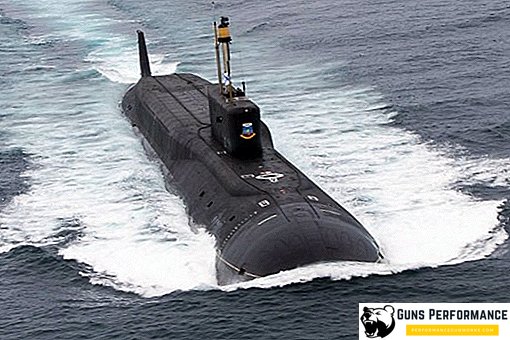One of the key regions of the planet in this century will be the Asia-Pacific region, the intense struggle for influence in which the United States and China are waging today. The United States today is the No. 1 power in the world, but its leadership is increasingly beginning to challenge China. Having shown the world a true economic miracle, China does not plan to stop there: the "Chinese dragon" spreads its wings and claims a leading role in the region.

China is actively modernizing its armed forces, the country has become the second largest in the world in terms of the defense budget. Even today, the PLA is the largest army on the planet, the fleet of military equipment is being actively updated. If earlier China created more or less good copies of Soviet weapons, today samples of Chinese weapons are at the level of the best world analogues, second only to the United States.
True, there is one potential theater of military operations where Americans still maintain overwhelming supremacy - these are sea and ocean spaces. The US Navy is the strongest on the planet and is far superior to the Chinese Navy. Most likely, this situation will continue in the coming decades. The strongest component of the US naval forces are numerous AUG (carrier strike groups).

However, it seems that the Chinese have come up with how to counter this threat and have created a weapon that is capable of effectively hitting aircraft carriers.
Dongfeng-21 ballistic missile for an aircraft carrier
In 2008, information appeared that could be called sensational, about the successful trials of a Chinese ballistic missile DF-21D, designed to destroy surface targets. What should be the goal for this rocket was quite simple to guess.
The use of ballistic missiles to fight surface ships is not a new idea. In the middle of the last century, similar rockets tried to be made in the USSR, but then the works were not crowned with success. Cruise missiles are now being used for such purposes, but hitting an aircraft carrier is not an easy task. It is accompanied by a dozen escort ships, the main purpose of which is to provide the aircraft carrier with reliable protection.
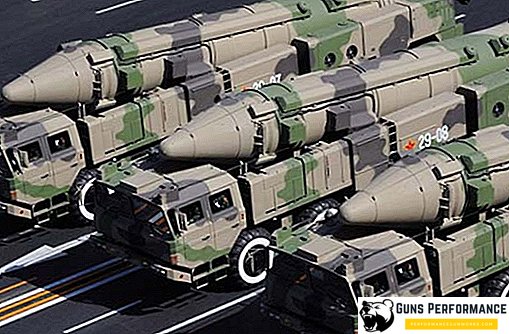
Cruise missiles are quite vulnerable to AUG air defense, and besides, they have a rather limited range of damage. The use of a ballistic missile can drastically change the situation: for most of its trajectory, such a missile is invulnerable to enemy air defenses. In addition, the ballistic missile has a long range, and due to the high speed - the minimum flight time. But there is one problem: how to get into a moving aircraft carrier.
But one thing to get on a fixed object and quite another - in the ship, moving with a fairly high speed. To do this, the rocket must have a perfect system of navigation and targeting. In addition, such a rocket must maneuver and point to the target. For the 60s of the last century, this was a completely new technical challenge, with many difficulties.
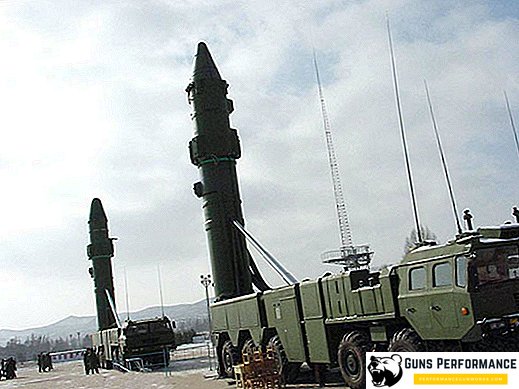
In the USSR, it was never decided, and then an agreement was signed on the prohibition of medium-range missiles.
Chinese ballistic missile DF-21D
Work on this rocket DF-21D have a long history. In 1965, China began the development of a single-stage ballistic solid-fuel rocket "Dongfeng-61" (DF-61). Two years later, the work was curtailed, but the developments gained during this project were used in the design of the first Chinese submarine-launched ballistic missile. The result of this work was the creation of a two-stage missile for submarines JL-1, as well as a land DF-21.
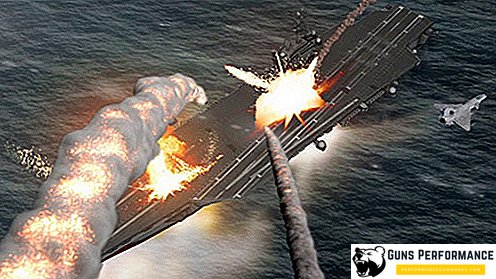
The first tests of Dong Feng-21 began in 1985, and in 1987 they were successfully completed. The range of the rocket was 1700 km, it could throw a load weighing 600 kg. It is believed that the probability of rejecting the warheads of this missile was approximately 300-400 meters. Dong Feng-21 could deliver a 500 kiloton nuclear warhead to its target.
Immediately began the development of a new modification of the rocket - DF-21A. The designers were assigned a new task: to significantly increase the range of the missile. The task was completed, the flight range was increased to 2,700 km, although the charge power decreased to 90 kt. The control system of this rocket has a radar and GPS. Probably, the accuracy of the delivered charge was significantly increased, the deviation was reduced to 100-300 meters.
DF-21C - this is the next modification of the rocket, which was shown to the general public in 2006. The accuracy of this product has increased, the radius of deviation from the target decreased to 30-40 meters (this is comparable with the results of cruise missiles). The DF-21C range is 1,700 km, the characteristics of the missile warhead are unknown. She was adopted.
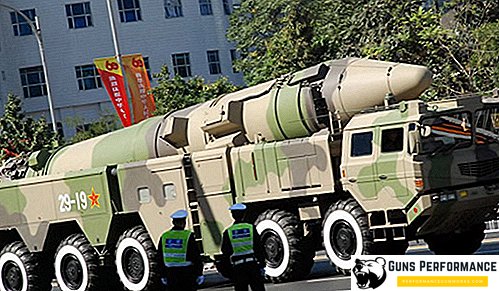
DF-21D is an anti-ship missile modification. According to the Pentagon, this is the only ballistic missile in the world that can hit AUG. Little is known about the missile guidance system. It is assumed that a number of satellites launched by the People's Republic of China in the middle of the last decade may provide target designation for these missiles. Also for targeting can use the latest Chinese over-the-horizon radar. The estimated range of the rocket is 1700 km, but it can be increased.
In the United States, they are following these Chinese developments with great concern. The current AUGs are much better protected than during the Cold War, except for the most powerful air defense system, the aircraft carrier group includes ships equipped with a missile defense system. But even for them to destroy a ballistic missile will be a very difficult task.
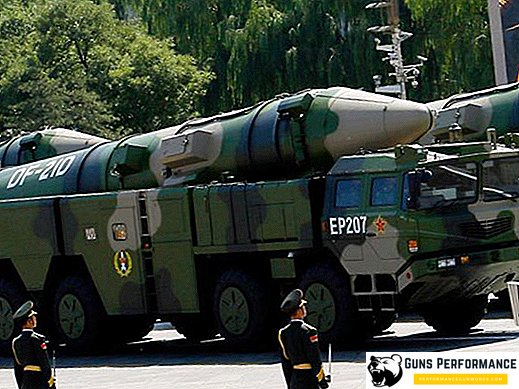
Even finding the fact of launching a rocket (it is very difficult to do) the ABM resources have very little time to neutralize the threat.
The only question is how perfect are the navigation and targeting systems of the DF-21D. Will they be able to resist the means of EW. Writing answers to these questions is difficult, since information about the new rocket is classified; the US military has not yet recorded the surface tests of the DF-21D.











